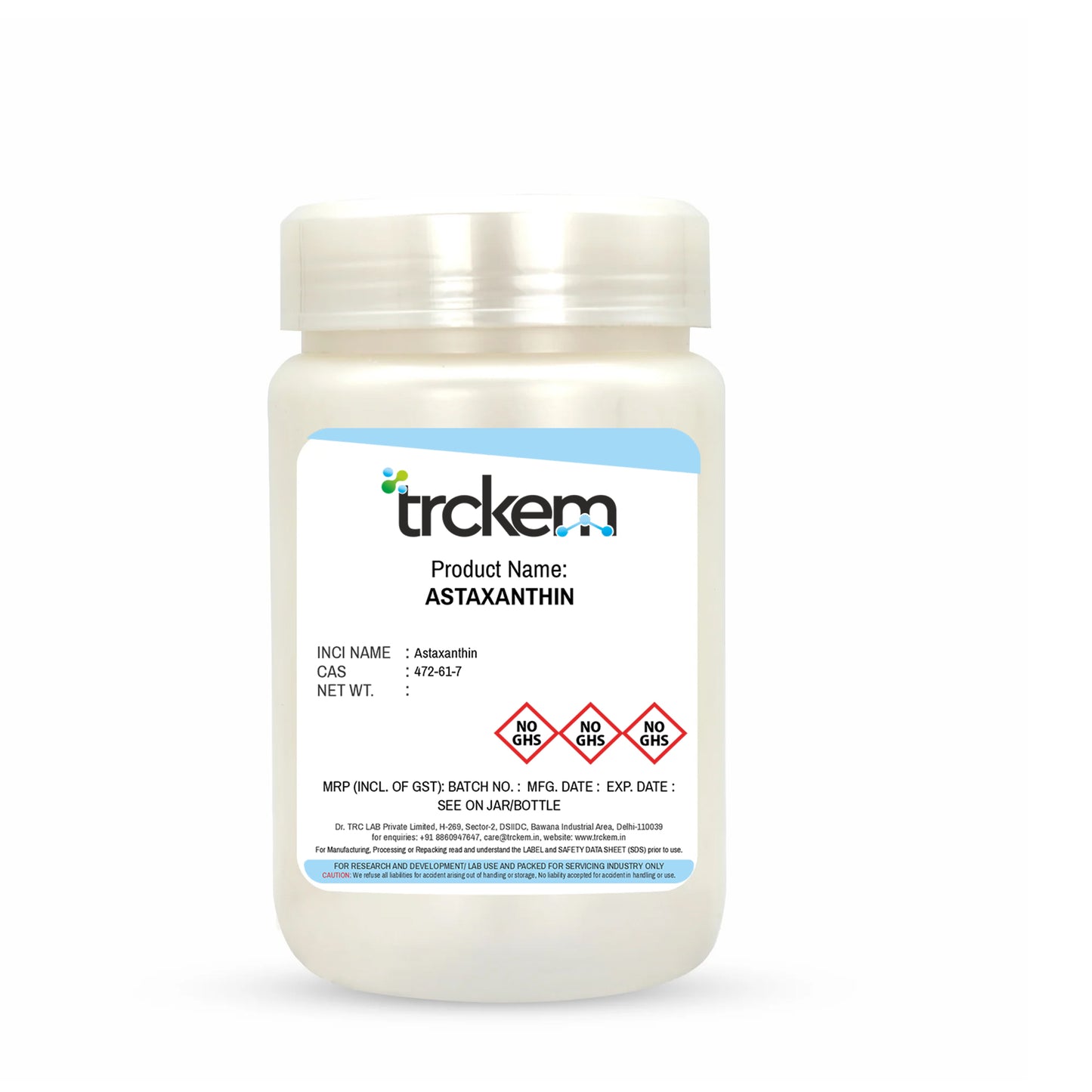

Formulator’s Queries, We Answered
1. What is astaxanthin?
Astaxanthin is a naturally occurring carotenoid (red/orange pigment) best known as the pigment in microalgae, salmon and crustaceans. In cosmetics it is used for its strong antioxidant and anti-inflammatory properties that help protect skin from oxidative stress and photo-damage
2. What is the CAS number of astaxanthin?
CAS number:472-61-7.
3. What is the INCI name for astaxanthin?
As a standalone ingredient: listed in ingredient databases as ASTAXANTHIN.
As an algal source (very common in cosmetics): Haematococcus Pluvialis Extract (this INCI denotes the microalgal extract that is rich in astaxanthin). Use the INCI that matches your raw material (pure astaxanthin vs. algal oleoresin/extract)
4. What are the claimed skin benefits?
Topical astaxanthin is reported to: reduce oxidative stress, help protect against UV/photo-damage, reduce inflammation, support collagen preservation (anti-aging), improve skin texture/radiance and aid moisture retention. These activities are supported by preclinical and clinical studies and systematic reviews.
5. Is astaxanthin oil- or water-soluble? How is it formulated?
Astaxanthin is lipophilic (oil-soluble). It is most commonly supplied as an oily oleoresin or algal extract and should be incorporated into the oil/lipid phase of emulsions or delivered via lipid carriers (nanoemulsions, liposomes, micelles, solid lipid nanoparticles) to improve stability and skin penetration




